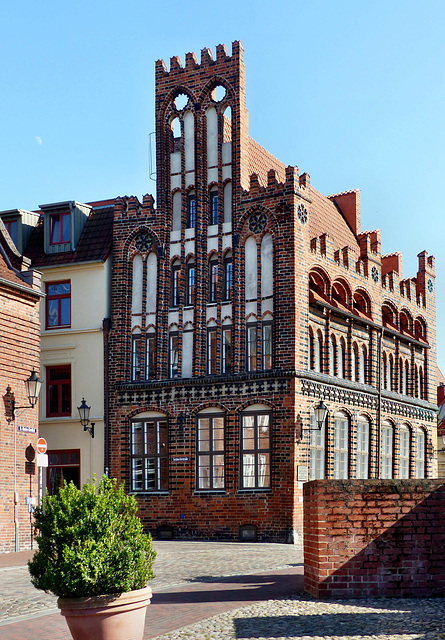Wismar - Alter Schwede
Wismar - Approaching St. Georgen
Wismar - St. Georgen
Wismar - St. Georgen
Wismar - Heiligen-Geist-Kirche
Wismar - Heiligen-Geist-Kirche
Wismar - Heiligen-Geist-Kirche
Wismar - Heiligen-Geist-Kirche
Wismar - Heiligen-Geist-Kirche
Wismar - Heiligen-Geist-Kirche
Hohenkirchen - Dorfkirche
Hohenkirchen - Dorfkirche
Hohenkirchen - Dorfkirche
Proseken - Dorfkirche
Proseken - Dorfkirche
Proseken - Dorfkirche
Neubukow - Gumball Machine
Kloster Doberan
Kloster Doberan
Kloster Doberan
Kloster Doberan
Kloster Doberan
Kloster Doberan
Wismar - Nikolaikirche
Wismar - Nikolaikirche
Wismar - Nikolaikirche
Wismar - Nikolaikirche
Wismar - Nikolaikirche
Wismar - Nikolaikirche
Wismar - Nikolaikirche
Wismar - Nikolaikirche
Wismar - Nikolaikirche
Wismar - Nikolaikirche
Wismar - Nikolaikirche
Wismar - Nikolaikirche
Wismar - Nikolaikirche
Wismar - Nikolaikirche
Wismar - Nikolaikirche
Wismar - Nikolaikirche
Wismar - Nikolaikirche
Wismar - Nikolaikirche
Wismar - Nikolaikirche
Wismar - Nikolaikirche
Wismar - Marienkirche
Wismar - Marienkirche
Location
Keywords
Authorizations, license
-
Visible by: Everyone -
All rights reserved
-
47 visits
Wismar - Archidiakonat


Slavic Obodrites lived in the area, where Wismar is now, until the end of the 12th century.
The exact date of the city's foundation is not clear, it had civic rights already in 1229 when migrants from Holstein and Westphalia settled here. The "Lübsches Stadtrecht" (town law) was confirmed in 1266. In 1259 Wismar joined a defensive agreement with Lübeck and Rostock, in order to counter the numerous Baltic pirates. Subsequently, more cities would agree to cooperate as commerce and trade were increasingly coordinated and regulated. These policies would provide the basis for the development of the "Hanseatic League". By the 13th and 14th centuries, Wismar had grown into a flourishing Hanseatic trading hub.
In 1632, during the Thirty Years' War, Sweden conquered the city, and the Swedish Crown received in the Peace of Westphalia in 1648 after the end of the Thirty Years' War.
Swedish rule over Wismar ended de facto in 1803 when Sweden pledged the city to the Duchy of Mecklenburg-Schwerin for 99 years. Formally, Wismar reverted to Germany in 1903 and Sweden waived its right to redeem the pledge.
Wismar is a typical representative of the Hanseatic League with its city-wide Brick Gothic structures and gabled patrician houses and has alongside the historical old town of Stralsund been declared the UNESCO World Heritage Site "Historic Centres of Stralsund and Wismar".
This house was built in the mid-15th century as a residence for the archdeacon. It was badly damaged during the Allied air raids in 1945 and a second time in 1960 when the nearby St. Mary's Church was blown up. It got rebuilt already in GDR-times.
The exact date of the city's foundation is not clear, it had civic rights already in 1229 when migrants from Holstein and Westphalia settled here. The "Lübsches Stadtrecht" (town law) was confirmed in 1266. In 1259 Wismar joined a defensive agreement with Lübeck and Rostock, in order to counter the numerous Baltic pirates. Subsequently, more cities would agree to cooperate as commerce and trade were increasingly coordinated and regulated. These policies would provide the basis for the development of the "Hanseatic League". By the 13th and 14th centuries, Wismar had grown into a flourishing Hanseatic trading hub.
In 1632, during the Thirty Years' War, Sweden conquered the city, and the Swedish Crown received in the Peace of Westphalia in 1648 after the end of the Thirty Years' War.
Swedish rule over Wismar ended de facto in 1803 when Sweden pledged the city to the Duchy of Mecklenburg-Schwerin for 99 years. Formally, Wismar reverted to Germany in 1903 and Sweden waived its right to redeem the pledge.
Wismar is a typical representative of the Hanseatic League with its city-wide Brick Gothic structures and gabled patrician houses and has alongside the historical old town of Stralsund been declared the UNESCO World Heritage Site "Historic Centres of Stralsund and Wismar".
This house was built in the mid-15th century as a residence for the archdeacon. It was badly damaged during the Allied air raids in 1945 and a second time in 1960 when the nearby St. Mary's Church was blown up. It got rebuilt already in GDR-times.
SV1XV, Alexander Prolygin have particularly liked this photo
- Keyboard shortcuts:
Jump to top
RSS feed- Latest comments - Subscribe to the comment feeds of this photo
- ipernity © 2007-2024
- Help & Contact
|
Club news
|
About ipernity
|
History |
ipernity Club & Prices |
Guide of good conduct
Donate | Group guidelines | Privacy policy | Terms of use | Statutes | In memoria -
Facebook
Twitter

Sign-in to write a comment.